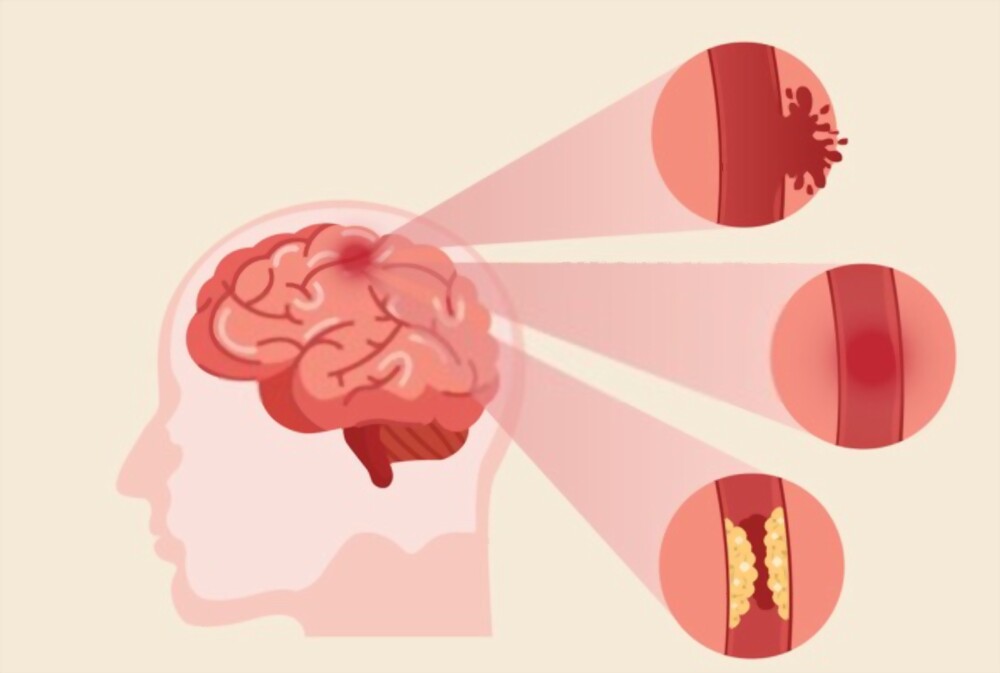Every 2 seconds someone somewhere in the world experiences a stroke and 1 out of every 6 people will have one at some point in their lives, stroke deprives the brain cells of oxygen and they are the number cause of death and leading cause of preventable disability.
It’s better to be safe than sorry when dealing with a stroke that’s why is very important to recognise the FAST signs of stroke.
Join our WhatsApp ChannelHow it comes about?
A stroke occurs when a blood vessel in the brain ruptures and bleeds, or when there’s a blockage in the Blood flow and oxygen delivery stops and brain cells dies. Strokes fall into three main categories: transient ischemic attack (TIA), ischemic stroke, and hemorrhagic stroke.
Transient ischemic attack: It’s often called a TIA or ministroke, occurs when blood flow to the brain is blocked temporarily and symptoms disappear after a few minutes or hours. A TIA is usually caused by a blood clot. It serves as a warning of a future stroke, so don’t ignore a TIA.
Ischemia stroke: On rare occasions a sudden change in heart rhythm prevents good contraction and slowed rhythm, allowing platelet, clotting factors and fibrin to stick together forming a clot that passes through the vessels till it gets to a vessel too small for it to squeeze through so it blocks that vessel cutting off supply of oxygen to that side of the brain.
Hemorrhagic; perforated vessel allows blood to leak out. The pool of blood from that artery creates excess pressure in the skull and swells the brain, damaging brain cells and tissues.
The Symptoms
The brain doesn’t have pain receptors so we can not feel the pain of oxygen deprivation, Symptoms depends on the part of the brain that is injured.
1. Slurred speech:
it affected the brain area is for speech
2. Hemiparesis or Hemiplegia:
Mild or Severe Weakness on one side of the body
3. Death:
Brain damage severe or permanent disability.
It’s managed by using an intravenous fluid “Tissue Plasminogen Activator” which helps remove clots from the compromised vessel or a thrombectomy procedure is carried out to remove the clot in time.
Treatment has to be delivered as soon as possible so Identifying symptoms and reacting quickly helps ensure early arrival to the hospital for assessment of potential stroke so we have to learn how to figure out FAST.
The FAST Test to help assess Stroke
F: Face Drooping (Ask the individual to smile then assess for Weakness)
A: Arms are lifted to assess for Weakness
S: Slurred Speach or Confused Speach
T: Time to call for Help
Those At Risk
1. Advanced Age: Above the age of 55
2. Family history Stroke
3. Men: it’s common in men but women die more from it more..
4. Diet: Unhealthy diet like Too much Salt, Fatty foods
5. Inactivity: Lack of exercise
6. Lifestyle: Smoking and Excessive Alcohol intake
How To Prevent Stroke
1. Quit smoking:
If you smoke, quitting now will lower your risk for stroke
2. Consume alcohol in moderation:
Avoid excessive alcohol intake
3. Keep the weight down:
Keep your weight at a healthy level. Being obese or overweight increases your stroke risk. Eat a diet that’s full of fruits and vegetables.
4. Stay physically active:
This will help you maintain a healthy weight and help reduce your blood pressure and cholesterol levels
5. Get checkups:
Stay on top of your health. This means getting regular checkups and staying in communication with your doctor.
If you suspect you’re experiencing symptoms of a stroke, it’s vital that you seek emergency medical treatment and Work with your doctor to find a prevention strategy.
Thank you for reading
Dr Kelly














